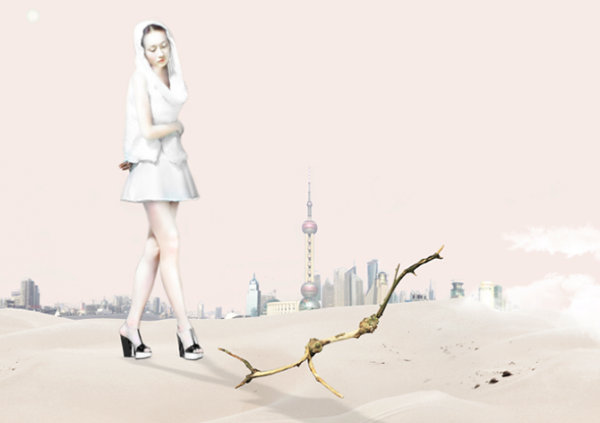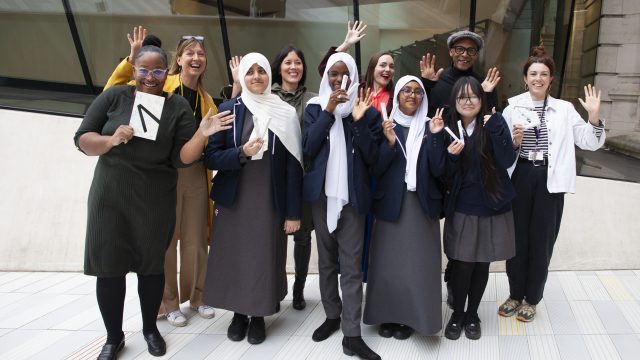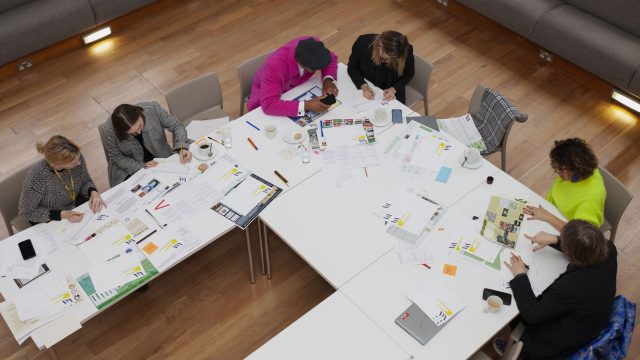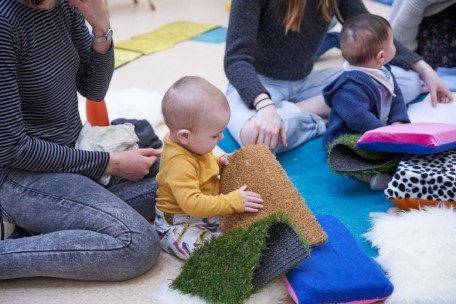This year marked the centenary of Alan Turing’s birth. Turing was one of the greatest scientists that Britain has ever produced and someone whose influence on the modern world, once concealed through the Official Secrets Act, has come to light. His work in cryptology, mathematics and computer science has led to him being considered the father of computer science, and, through his ‘Turing Test’, of artificial intelligence.
To celebrate his work and his influence not only in heady science but also the arts, we decided to hold an open submission contest for the Digital Design Festival around the theme of artificial intelligence.
The ‘Turing Test’ was a way of analysing how far we can say that a machine is intelligent. Turing proposed that it should not be measured in terms of processing and instructions per second, but rather that it is a matter of perception. If a human has a conversation with a computer, and in a blind test cannot tell the difference between a computer responding with its own answers and a human pretending to be the computer responding, then the machine can be said to possess intelligence.
The entries we received covered all manner of digital art forms: from robotics and coding to digitally manipulated paintings and film. Here is a choice of some of the best entries below:
Ling Xizhu Meng
Ling is a student at the Royal College of Art studying Design Interaction. Her work explores design approaches from both the West and her native country, China, and asks how in a world where robotics will become increasingly prevalent, we will interact with them and how they will in return interact with us.

Here is Ling’s explanation of ‘Spring Teller’:
‘What is a robot? What should a robot do? The Bio-robot ‘Spring Teller’ is a conception of Asian aesthetics and future materials. It is a social robot that you can send to your friends. In the future, some people may live far from nature. Nothing will change in four seasons. The Spring Teller will walk the way you decide and knock on your friend’s door and tell them that spring is coming. If you don’t go to find the natural, the natural will come and find you. This work also poses the question that what technology should look like. We can make it lovely instead of cold and unfeeling.’
Ekaterina Chernyaeva
Ekaterina is a filmmaker hailing from Russia whose entry looks at the dialogues carried through virtual spaces, the disconnect between intimacy online and how we actually perceive the communication we have with disembodied, flat screen friends. What would the Turing Test make of this: is the person we are seeing and speaking to online actually there, or is it all a trick, a recording and an illusion?
Ekaterina explains:
‘Increasingly we communicate via means of technology which become our prostheses, often a communication is not possible without technology. We are cyborgs, we become robotic. Our minds, skills and technics integrate with mechanics, technology and human intelligence become inseparable from the artificial, and our communication is nearly impossible without means of technology turning it into artificial dialogues fed by artificial intellects.’
Paul Carvill and Suki Rai
Paul is a director and Suki, a senior designer, at LBI, who specialise in technology and marketing. Paul and Suki’s piece of reactive and kinetic typography is designed to react to inputted sound, whether that comes live from a microphone or from a pre-recorded source. The text responded to the dynamics of the sound, reversing the usual response of voice dynamically responding to written word. The work was created in Processing, an open source programming language created for artists to use and learn with no prior experience or knowledge of coding.
The video features a recording of William S. Burroughs reading “Meeting Of International Conference Of Technological Psychiatry” and contains language that some may find offensive:
David Jane
David is a painter, sculptor and printmaker from London whose work has appeared in a number of galleries, including the Welcome Collection. After an experience of suffering encephalitis which caused a loss of memory and speech, he turned to the scans of his brain for inspiration and to understand how the incident could be communicated and understood.
The works submitted are purely digital in final form but started their life as paintings combining pigment with wax. David then photographs the paintings and works on them digitally, manipulating and layering the images until they become something new. These layered digital paintings create pictures inside pictures, refracting spaces and fading environments, mimicking memory and our imperfect recollections.


Takako Nakasu and Elena Jacinta
‘Re-remembered’
This collaborative work stems from Takako and Elena’s own personal projects that – independently, and through their own media (photography and choreography, respectively) – explore the idea of ‘other’ space. Their exploration relies on mirror as the doorway into that space. The film recreates the illusiveness of a half-forgotten dream, the blurred memories of something that happened a long time ago, and things re-imagined…things re-remembered. The film is also inspired and influenced by Crystal Palace Park, where much of the cinematography takes place. The work also features an original piece of music scored for the film by Sylvia Hallett.
Philo van Kemenade
‘EmerGenes’
Philo is a film maker and researcher into cognitive computing. His work emergences EmerGenes is written in c++ and openFrameworks. The work gives users the opportunity to explore how simple rules affect behaviour on flocks of artificial life forms. The life forms, boids, react through rules of repulsion and attraction, allowing them to group together or behave independently. Through altering the control parameters, users can witness how simple rules can create complex behaviours and patterns.
Russell Richards
‘AI_AT’
Russell is a senior lecturer and MA Media tutor at Southampton Solent University and also a digital artist who has exhibited by in the UK and internationally. His piece ‘AI_AT’ is an app which creates complex patterns, recalling neural webs and pathways from small vector filaments. As the filaments fill and evolve in their circular frame, they call up soundwaves which are themselves reacting to the code appearing in the image. The visuals and sounds vary over time, in unpredictable manifestations. As Russell describes his work:
‘In its own discrete way ‘AI AT’ shows how very simple components can be brought together to make something of significance. This process mirrors that of the awe-inspiring work of Turing in extracting data from code to change the world.’
Patrick and Patrica Padget
Patrick and Patricia Padget have been working together for over 30 years and their works feature in public and private collections, both in the UK and internationally. The work pulls together unexplained sightings from across the UK, weaving a narrative of unexplained phenomena and subterfuge. The digitally manipulated images were created after Patrick attended a Photoshop course at the V&A and the story, well, who can say if it was created or recalled?
Here is Patrick and Patricia’s take on the work:
‘The very first time I saw one was at 9.45 pm on April 23rd 1967. Cycling home from my twice-weekly visit to the local youth club, I was suddenly conscious of two bright lights in the sky approaching me across the fen at a great speed. As they got closer I could see that they were like car head lamps, but much, much brighter. Weirdly, I could hear no sound at all apart from the the icy cold wind skirling in from Lincolnshire! I got off my bike and stood, mesmerised, as the lights passed over my head and swept on towards Littleport and then on down the endless straight road to Mildenhall.
I wasn’t frightened at the time, just puzzled about the peculiar phenomenon I had witnessed. Then I completely forgot about it until…In August 1975 driving over the South Downs with my new wife Patricia, in our battered old dark green Austin A30, we both saw a silver metallic craft hovering in the clouds above Eastbourne. I knew at once that it was connected to what I had seen eight years earlier in The Fens. As time passed we began to see them more and more often and learned eventually, how to record them for posterity.’



